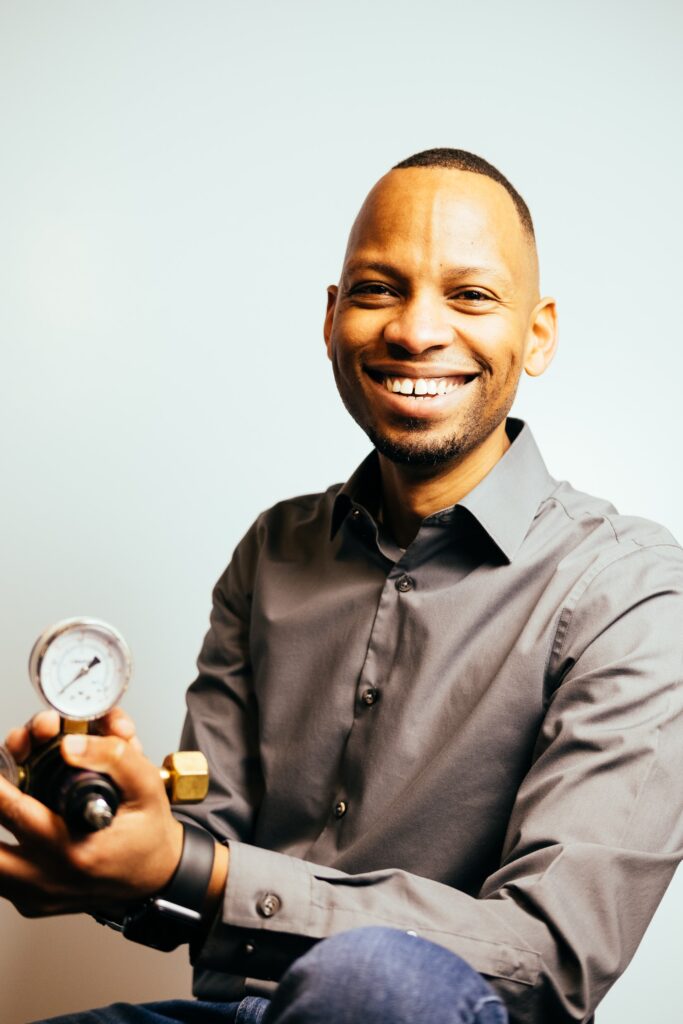Mwangi Ndonga started as an industrial hygienist in the upstream oil and gas sector. He initially supported assets in WY and CO. After several years, he says he had the privilege of managing industrial hygiene and occupational health for U.S. and Canadian operations. Mwangi changed sectors during the pandemic and now works in manufacturing as senior health and safety hygienist for Ball Corporation. He has become enthusiastic about embracing artificial intelligence (AI) tools to enhance what he does, and he strongly believes that AI has a role in managing EHS risk.
For our latest Faces of EHS profile, we sat down with Mwangi to discuss how he got his start in the industry, AI, and the future of technology in EHS.
Q: How did you get your start in the field?
My introduction to EHS occurred while obtaining an MS in Environmental Health at Colorado State University. My thesis work related to aerosol exposure in the workplace. I was fortunate to be a NIOSH Mountain and Plains Educational Research Trainee. The MAP ERC did a great job of fostering interdisciplinary collaboration. Even today, I connect with my former classmates who are industrial/organizational psychologists and ergonomists regarding workplace initiatives.
Q: Who has been your biggest influence in the industry?
I can’t point to one person as an influence—I have many. There have been milestones in my career where individuals influenced my next steps. More recently, I’ve been leaning on data scientists to guide me in stewarding our EHS profession towards data maturity. I love the prudent approaches some of these data scientists take in making data relevant to workers, businesses, and the public.
Q: What’s your best mistake and what did you learn from it?
My best mistake was assuming that for every challenge I would encounter in my profession there would be an answer in an EHS textbook. I have found that creative problem solving is required to navigate the myriad of non-black and white challenges in EHS. Also, the outcome(s) of creative problem solving may not completely overcome a challenge but having done something is always better than doing nothing.
Q: What’s your favorite and least favorite part about working in the industry?
My favorite part of working in the EHS profession is interacting with the workforce. Seeing where things are made, where bottlenecks occur, and the pressure of production always calibrates my office-related duties to against reality. My least favorite part of my job are things like data entry and other things the prevent me from spending time managing risk. Would you change anything? Yes. To combat things like the tedium of data entry I wish I took a few classes related to data science during graduate school. I also wish I took some industrial organization psychology-related classes so that I can better understand how organizations function (or don’t).
Q: How can company leaders make safety a value within their organization?
Company leaders can make safety a value by looking at safety as something that is beyond compliance. Compliance is the bare minimum. If something is valuable, then you don’t look at the bare minimum and aim at that. Instead, you define your vision and create goals and practices that align with that vision.
Q: Where do you see the industry heading in five years?
I see artificial intelligence tools becoming more necessary. While the EHS professional’s judgment will always be valuable, AI tools will help that professional with making decisions based on data sets that are too large or fast to be interpreted by a human being. I am actively trying to find AI applications to the industrial hygiene and ergonomics programs I manage.
Q: How has the COVID-19 pandemic influenced our trajectory regarding the adoption of technological tools?
There is no doubt that tech tools have helped us navigate this pandemic. They have also shown us what they can’t do: replace human interaction. But in terms of the Future of Work—which NIOSH says accompanies the work, worker, and workplace—how that work is performed, by whom it’s performed, and where it’s performed is being drastically redefined by technology.
Q: How do companies attract young professionals to the EHS profession?
We need to open to abolishing traditional methods that aren’t practical for today’s challenges. Just as the technology sector is constantly evolving, so should we. I’m encouraged by the questions that early career professionals that I’ve worked with pose such as, “Why do we do it this way?” I’m encouraged to ask myself whether “how we’ve done in the past is how we should do it in the future.”
Q: Do you have any advice for people entering the profession?
Embrace technology. Embrace it as a way to reduce the non-value-adding things you will be asked to do (e.g., manual data entry, dealing with archaic processes). Embrace it as a way to assist with decision-making (e.g., application of machine learning to your data).
Q: What are you most proud of?
Professionally, I’m proud of something that I partnered with my close friend Kyle Kreuger: a podcast called Probability Matters. Following many lunch conversations about the intersection of EHS and technology, Kyle and I started a similarly themed podcast. I’m proud that we interviewed a range of professionals that include EHS, data scientists, CEOs, behavioral scientists, professors, students, and business consultants. Tune in!


